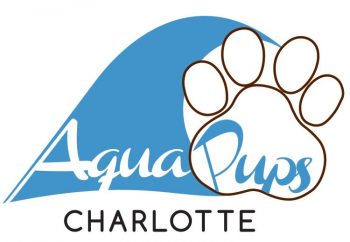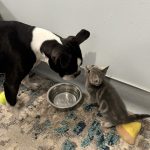Spring Safety Tips: Keeping Your Pets Safe Indoors and Outdoors
As the flowers bloom and the weather warms up, spring brings new opportunities for outdoor activities with our beloved pets. However, along with the joys of the season, come potential hazards that pet owners need to be aware of to ensure the safety and well-being of their furry companions.
In addition, many pet owners are eager to spruce up their gardens. However, amidst the excitement of planting, it’s crucial to consider the safety of our furry companions.
While gardens can be a source of joy and relaxation for both humans and pets, some plants may pose a threat to their health.
Quick Indoor Safety Tips
- Spring Cleaning Precautions: Be mindful of the cleaning products you use indoors, as many household cleaners can be toxic to pets. Keep cleaning supplies securely stored away from curious noses.
- Secure Windows and Screens: With the warmer weather, you may be inclined to open windows to let in fresh air. Make sure window screens are securely in place to prevent pets from accidentally falling out.
- Pet-Proof Your Home: Springtime often means more time spent outdoors, which can lead to bringing in dirt and debris. Regularly vacuum up any potential hazards like pollen and/or insecticides.
- Springtime Shedding: Many pets experience increased shedding as they shed their winter coat. Regular grooming can help minimize shedding and prevent hairballs.
- Prevent Fleas and Ticks: With spring, comes an increase in flea and tick activity. Keep your pets protected with veterinarian-approved flea and tick prevention treatments.
- Springtime Allergens: Keep an eye on seasonal allergens. Wipe your pet’s fur and paws after outdoor excursions to minimize exposure.
Quick Outdoor Safety Tips
- Leash Safety: Always keep your pets on a leash when outdoors, especially in unfamiliar areas. Springtime distractions like new scents and wildlife can tempt pets to wander off.
- Allergies and Pollen: Just like humans, pets can suffer from seasonal allergies. Keep an eye out for signs of allergies, such as excessive scratching or sneezing, and consult your veterinarian, if necessary.
- Avoid Toxic Plants: Many common spring plants are toxic to pets, if ingested (see below).
- Beware of Pesticides: When sprucing up your garden or lawn, opt for pet-safe pesticides and fertilizers to avoid exposing your pets to harmful chemicals.
- Watch Out for Wildlife: Spring is a time when wildlife becomes more active. Keep your pets away from areas where they may encounter wild animals, like snakes and skunks.
- Stay Hydrated: Bring plenty of water for both you and your pet during outdoor activities to prevent dehydration, especially on warmer days.
Pet Safety When Gardening
- Choose Pet-Friendly Plants: Opt for pet-safe plants in your garden and landscape to avoid potential poisoning (see below).
- Create a Safe Garden Space: Designate a pet-free zone in your garden where you can safely plant toxic plants or use fertilizers. Use fencing and barriers to keep pets out of these areas.
- Supervise Outdoor Time: When your pets are in the garden, supervise them closely to prevent them from digging up plants and/or ingesting harmful materials.
- Store Garden Supplies Securely: Keep gardening tools, pesticides and fertilizers stored securely in a locked shed or garage to prevent accidental ingestion by pets.
- Teach Boundaries: Train your pets to respect garden boundaries and discourage behaviors like digging or chewing on plants. Positive reinforcement training can help reinforce good behavior.
- Regularly Inspect the Garden: Routinely inspect your garden for signs of potential hazards or damage caused by pets. Promptly remove any toxic plants or debris to keep your garden safe for pets.
Types of Plants Harmful to Pets
- Lilies: While lilies are beloved for their elegant blooms, they are highly toxic to cats. Even small ingestions, such as licking pollen from their fur, can lead to severe kidney damage, which can be fatal.
- Azaleas and Rhododendrons: These popular flowering shrubs contain toxins called grayanotoxins, which can cause vomiting, diarrhea and even cardiovascular issues.
- Tulips and Daffodils: Bulb plants like tulips and daffodils contain toxins that can cause gastrointestinal upset, drooling and in severe cases, cardiac issues if ingested by pets.
- Sago Palm: This ornamental plant, commonly used in landscaping, is highly toxic to pets. Ingestion of any part of the sago palm can lead to liver failure and, if left untreated, prove fatal.
- Oleander: Known for its vibrant flowers, oleander contains cardiac glycosides that can cause vomiting, diarrhea and heart abnormalities in pets.
Pet-Friendly Plants
Here is a list of pet-friendly plants you can feel free to incorporate into your garden and landscape. These plants will not only enhance the beauty of your outdoor space, but also provide for a safe environment for your beloved pets to roam.
- Marigolds
- Sunflowers
- Spider Plants
- Catnip
- Pet Grass
Conclusion
As you enjoy the beauty of springtime with your pets, it’s crucial to prioritize their safety and well-being. Hopefully, these tips will provide guidance on keeping your pet safe, both indoors and outdoors.
Remember to consult your veterinarian if you have any concerns about your pet’s safety or health during this time of year.











